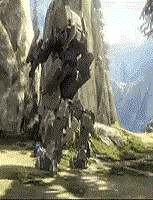Search the Community
Showing results for tags 'gamespot'.
-
Kynan Pearson and Lori Zawada give us an in-depth tour of the three beautiful Forge mode maps. Read below for more details Source: Gamespot.com Erosion 3 areas: Interior (empty room for grifball) Outside (Natural Terrain, Lots of hills, ramps, and...
- 20 comments
-
- Halo: Reach
- 343
-
(and 5 more)
Tagged with:
-
Shortly after their hour long panel at the recent GDC, Joe Staten and Chris Barrett sat down with Eddie Makuch of Gamestop for a little more "in-depth" information regarding Bungie's upcoming game "Destiny". A very insightful look into a game that looks to have enough depth in both the Campaig...
- 1 reply
-
- 3
-

-
- gamespot
- Chris Barrett
-
(and 4 more)
Tagged with:
-
Kynan Pearson and Lori Zawada give us an in-depth tour of the three beautiful Forge mode maps. Read below for more details Source: Gamespot.com Erosion 3 areas: Interior (empty room for grifball) Outside (Natural Terrain, Lots of hills, ramps, and...
- 20 replies
-
- Halo: Reach
- 343
-
(and 5 more)
Tagged with:



